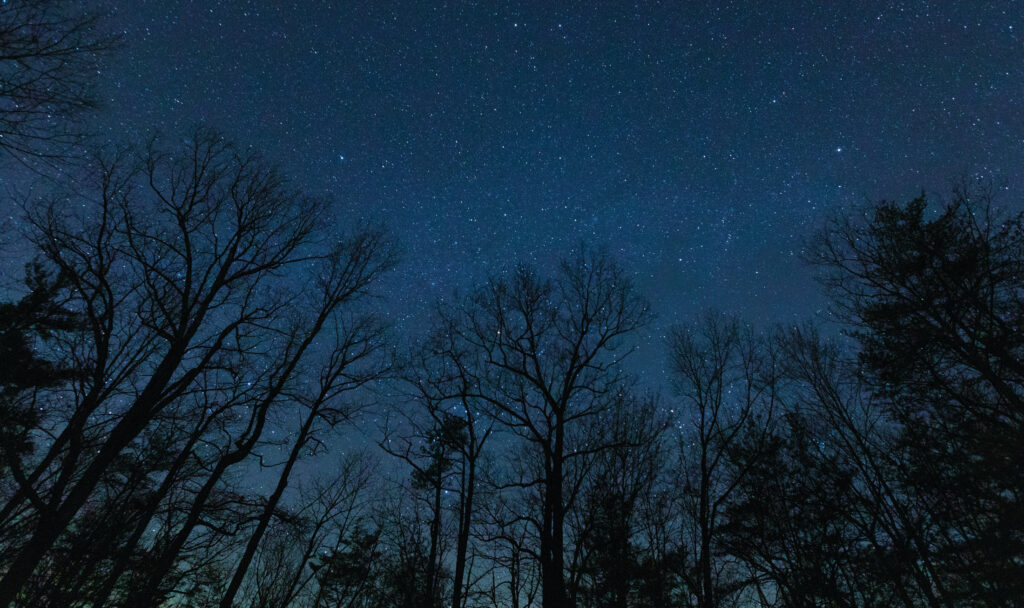I’ve always been fascinated with stargazing. I have spent hours lying on my back, watching the wondrous night sky, especially during the very early morning hours that are best for viewing meteor showers. I am no expert on the heavens and constellations above, but I view them with awe and wonder each time.
In preparation for attempting astrophotography for the first time, I researched the technical aspects as well as the subject — the night sky. You will find that the most important keys to success in photographing the stars above are a very sturdy tripod and a very dark, clear sky during a new moon.
Researching the technical photography aspect, I found that the settings noted above offered a long enough shutter speed to capture the stars without showing movement as the Earth rotated and an ISO that did not add too much noise, preventing a grainy appearance. It is also best to photograph in a raw format and process the images with one of the many brands of photography software available. I used Adobe Bridge.
With regard to a dark sky, light pollution was my No. 1 concern for the success of this shoot. In many places in the United States, light pollution obscures all but the brightest of stars. For locations, I chose Pickett CCC Memorial State Park and the Pickett-Pogue Astronomy Field because they received a DarkSky designation in 2015.
I talked an intrepid photography friend of mine, Devi Sanford, into joining me on the trip to East Tennessee. Neither of us had shot dark skies before, so we learned together. We both use Canon equipment and had packed a variety of lenses to try. We found that an extreme wide-angle lens was the best choice and also liked the results from a fisheye lens for more creative compositions.
For the best success, you will need a DSLR camera body with either no mirror or an option to lock the mirror up to minimize any vibration in the camera, a fast lens with an f-stop under 5.6 if possible, a sturdy tripod and a cable release.
There are several apps you can download to help with timing and locations. I used SkyView, PhotoPills and Stellarium.
After consulting the apps and trying a couple of locations within the area over the course of three to four hours, a haze began to obscure our view, and we packed up and headed home. Unfortunately, we left before the Milky Way rose in the eastern sky.
I am planning to return in April to photograph the Milky Way. I’m afraid I have found in astrophotography another obsession to chase for that perfect photograph.



